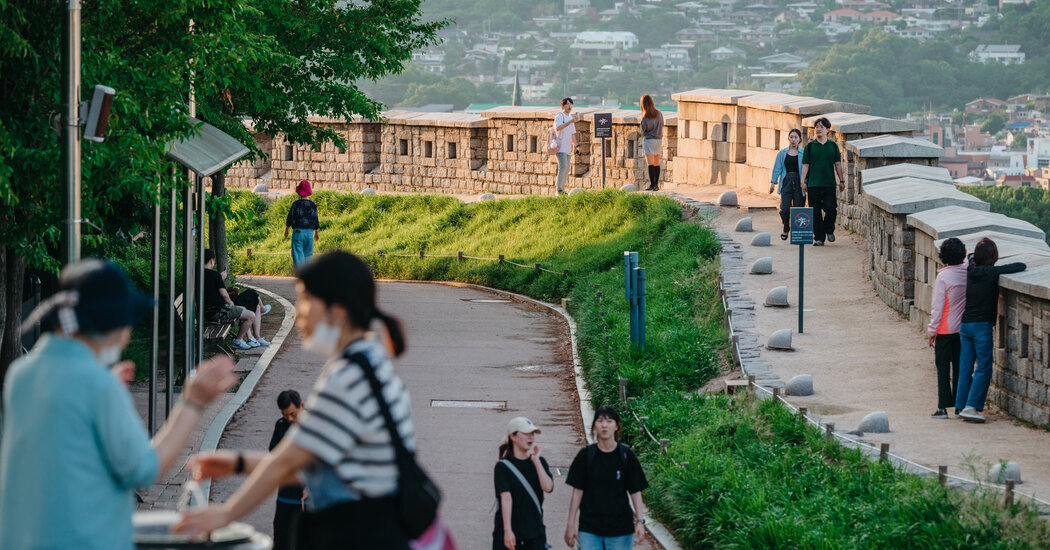To walk along the Seoul City Wall is to walk in the footsteps of scholars of bygone centuries, trace scars of war and take in the modern behemoth of a city built around it all. Its history stretches back to 1396, to when present-day Seoul first became the capital of what was then a kingdom called Joseon.
Then, the wall encircled an area that’s but a small fraction of today’s sprawling city, incorporating the slopes of the four mountains that afforded natural fortification. Like Seoul itself, the wall has been destroyed and rebuilt several times — and after restorations in recent decades, it’s become a popular urban walk.
Exploring the entire 12.5-mile loop would take a whole day, but you can take in the most scenic parts, along its northern half, in about four hours. Pick up the trail on the loop’s western edge, a short distance uphill from Muak Children’s Park, and follow its immediate steep ascent, going clockwise along the wall. About 15 minutes in, you’ll skirt a giant boulder and come to your first vista point, which reveals the wall snaking between the trees, the Seoul Tower and nearby Gyeongbokgung Palace.
Next is a short descent followed by another heart-pumping climb. Three quarters of a mile into the walk, you’ll be standing atop the first of three mountains, the 1,100-foot-high Inwangsan. You’ll see signs for “Hanyangdoseong,” as the wall is known in Korean (“Hanyang” is the historic name for Seoul). Make a sharp left coming down from the peak to find the trail. As you descend, start looking for stones marked with Chinese characters embedded in the wall — there are around 290 of them, bearing the names of the people who constructed sections of the wall.
Stay along the wall and follow signs for Changuimun Gate, the first of four gates you’ll encounter on the walk. (There were originally eight along the wall; six remain.) Cross a couple roads to get to the gate, on the other side of which you’ll find the quaint Buam-dong neighborhood.
Before tackling the next ascent, refuel here with orange vanilla cake and fig-and-Earl Grey scones at Scoff Bakehouse, or dumpling soup at Jaha Son Mandu, which has panoramic views of the surrounding mountains and a glimpse of the fortress wall.
Walk back through the gate, and up a set of wooden steps past a green fence topped with concertina wire to continue onto the next mountain, Bugaksan. As the wall curves ahead, you’ll get a view of its exterior, showing the varying stones and…
Click Here to Read the Full Original Article at NYT > Travel…
